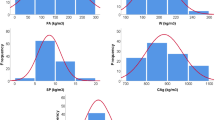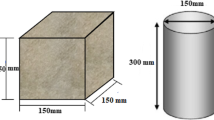Abstract
Degradation of RC structures due to corrosion induced mechanism in the reinforcing steel is a serious durability problem worldwide. It occurs essentially when the reinforcement within the concrete is subjected to marine or aggressive environment. The aim of the present work is to predict the reliable service life of the RC structures by taking into consideration of various prominent models of corrosion and comparing the output with the predicted output of ANN model. Parametric studies have been conducted on four different models to study the effect of various parameters such as corrosion rate, cover thickness, bar diameter, and perimeter of bar which actively participates in the time dependent degradation of RC structures. The outcomes of the parametric inspection of the four chosen degradation models are shown in the present study. The acceptability of the prediction models in forecasting the service life of RC structures are shown through circumstantial illustrative analysis and the best suited model sorted out. However, with the application of soft computing such as ANN, a prediction has been made to determine the service life of RC structures, and the predicted outputs validated with the intended outputs thereby yielding good outcomes for envisaging service life of RC structure.


















Similar content being viewed by others
References
Ahmad S (2003) Reinforced corrosion in concrete structures, its monitoring and service life prediction a review. Cem Concr Compos 25(4–5):459–471
Bazant ZP (1979) Physical model for steel corrosion in concrete sea structures-application. J Struct Div 105(6):1155–1166
Beeby AW (1978) Corrosion of reinforcing steel in concrete and its relation to cracking. Struct Eng 56A(3):77–81
Bhargava K, Ghosh AK, Mori Y, Ramanujam S (2005) Modeling of time to corrosion induced cover cracking in reinforced concrete structures. Cem Concr Res 35(11):2203–2218
Bhargava K, Ghosh AK, Mori Y, Ramanujam S (2006) Analytical model for time to cover cracking in RC structures due to rebar corrosion. Nucl Eng Des 236(11):1123–1139
Cardoso JB, de Almeida JR, Dias JM, Coelho PG (2008) Structural reliability analysis using Monte Carlo simulation and neural networks. Adv Eng Softw 39(6):505–513
Choe DE, Gardoni P, Rosowky D, Haukaas T (2008) Probabilistic capacity models and seismic fragility estimates for RC columns subject to corrosion. Reliab Eng Syst Saf 93(3):383–393
Chojaczyk AA, Teixeira AP, Neves LC, Cardosa JB, Guedes SC (2015) Review and application of artificial neural networks models in reliability analysis of steel structures. Struct Saf 52A:78–89
Cusson D, Lounis Z, Daigle L (2010) Benefits of internal curing on service life and life-cycle cost of high-performance concrete bridge decks—a case study. Cem Concr Compos 32(5):339–350
D’Angelo G, Laracca M, Rampone S (2016) Automated Eddy current non-destructive testing through low definition Lissajous figures. IEEE Metrol Aerosp. https://doi.org/10.1109/MetroAeroSpace.2016.7573227
D’Angelo G, Laracca M, Rampone S, Betta G (2018) Fast eddy current testing defect classification using Lissajous figures. IEEE Trans Instrum Meas 67(4):1–10. https://doi.org/10.1109/TIM.2018.2792848
Hassan JE, Bressollette P, Chateauneuf A, Tawil KE (2010) Reliability-based assessment of the effect of climatic conditions on the corrosion of RC structures subject to chloride ingress. Eng Struct 32(10):3279–3287
Haykin S (2005) Neural networks. Pearson Education, Hamilton
Imam A, Anifowose F, Azad AK (2015) Residual strength of corroded reinforced concrete beams using an adaptive model based on ANN. Int J Concr Struct Mater 9(2):159–172
IRC SP 60 (2002) An approach document for assessment of remaining life of concrete bridges
Liang MT, Wang KL, Liang CH (1999a) Service life prediction of reinforced concrete structures. Cem Concr Res 29:1411–1418
Liang MT, Hong CL, Liang CH (1999b) Service life prediction of existing reinforced concrete structures under carbonation-induced corrosion. J Chin Inst Civ Hydraul Eng 11(3):485–492
Liang MT, Lin LH, Liang CH (2002) Service life prediction of existing reinforced concrete bridges exposed to chloride environment. J Infrastruct Syst ASCE 8(3):76–85
Maaddawy TE, Soudki K (2007) A model for prediction of time from corrosion initiation to corrosion cracking. Cem Concr Compos 29(3):168–175
Mangat PS, Elgarf MS (1999) Bond characteristics of corroding reinforcement in concrete beams. Mater Struct 32:89–97
McCulloch WS, Pitts WH (1943) A logical calculus of the ideas immanent in nervous activity. Bull Math Biophys 5:115–133
Ming-Te L, Ran H, Shen-An F, Chi-Jang Y (2009) Service life prediction of pier for the existing reinforced concrete bridges in chloride-laden environment. J Mar Sci Technol 17(4):312–319
Moaveni B, Conte JP, Hemez FM (2009) Uncertainty and sensitivity analysis of damage identification results obtained using finite element model updating. Comput Aided Civ Infrastruct Eng 24(5):320–334
Morinaga S (1988) Prediction of service lives of reinforced concrete buildings based on rate of corrosion of reinforcing steel. Report No. 23. Shimizu Corporation, Japan, pp 82–89
Papadrakakis M, Lagaros ND (2002) Reliability-based structural optimization using neural networks and Monte Carlo simulation. Comput Methods Appl Mech Eng 191(32):3491–3507
Saad T, Fu CC (2015) Determining remaining strength capacity of deteriorating RC bridge substructures. J Perform Constr Facil 29(5):1–12
Sadiqual Islam GM (2009) Determination of the threshold chloride concentration for corrosion of steel in concrete by half-cell potential monitoring. Division of built environment
Tuutti K (1982) Corrosion of steel in concrete report 4-82. Swedish Cement and Concrete Research Institute, Sweden
Val DV, Melchers RE (1997) Reliability of deteriorating RC slab bridges. J Struct Eng 123(12):1638–1644
Vu KAT, Stewart MG (2005) Predicting the likelihood and extent of reinforced concrete corrosion-induced cracking. J Struct Eng 131(11):1681–1689
Wang XM, Zhao HY (1993) The residual service life prediction of RC structures. In: Nagataki S (ed) Durability of building materials and components, vol 6. E & FN Spon, New York, pp 1107–1114
Weyers RE (1998) Service life model for concrete structure in chloride laden environments. ACI Mater J 95(4):445–453
Zarola A, Sil A (2017) Artificial neural networks (ANN) and stochastic techniques to estimate earthquake occurrences in Northeast region of India. Ann Geophys 60(4):1–37
Author information
Authors and Affiliations
Corresponding author
Ethics declarations
Conflict of interest
All the authors declare that they have no conflict of interest.
Animal rights statement
This article does not contain any studies with animals performed by any of the authors.
Ethical approval
This article does not contain any studies with human participants or animals performed by any of the authors.
Additional information
Communicated by V. Loia.
Publisher’s Note
Springer Nature remains neutral with regard to jurisdictional claims in published maps and institutional affiliations.
Rights and permissions
About this article
Cite this article
Dey, A., Miyani, G. & Sil, A. Application of artificial neural network (ANN) for estimating reliable service life of reinforced concrete (RC) structure bookkeeping factors responsible for deterioration mechanism. Soft Comput 24, 2109–2123 (2020). https://doi.org/10.1007/s00500-019-04042-y
Published:
Issue Date:
DOI: https://doi.org/10.1007/s00500-019-04042-y




